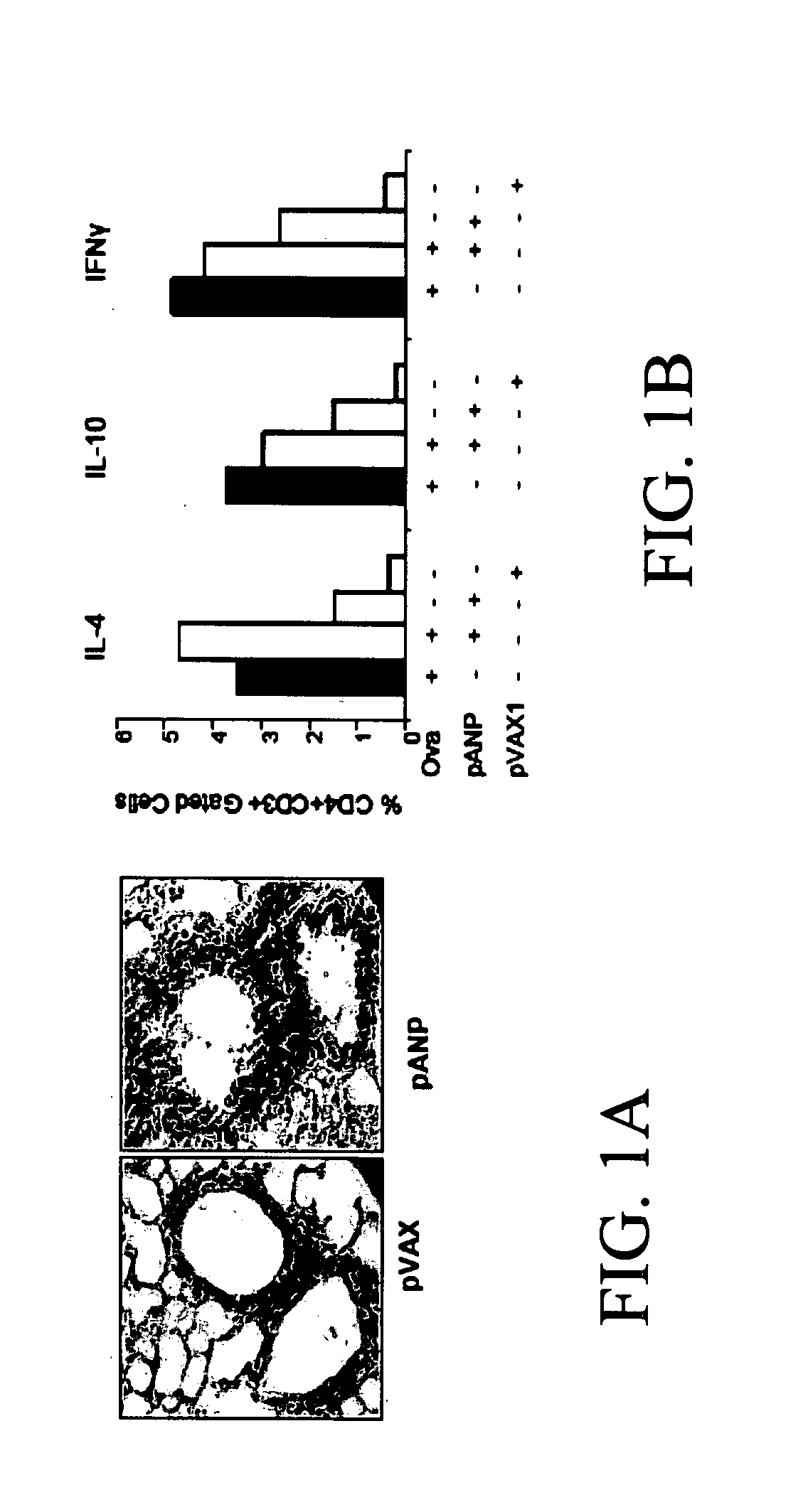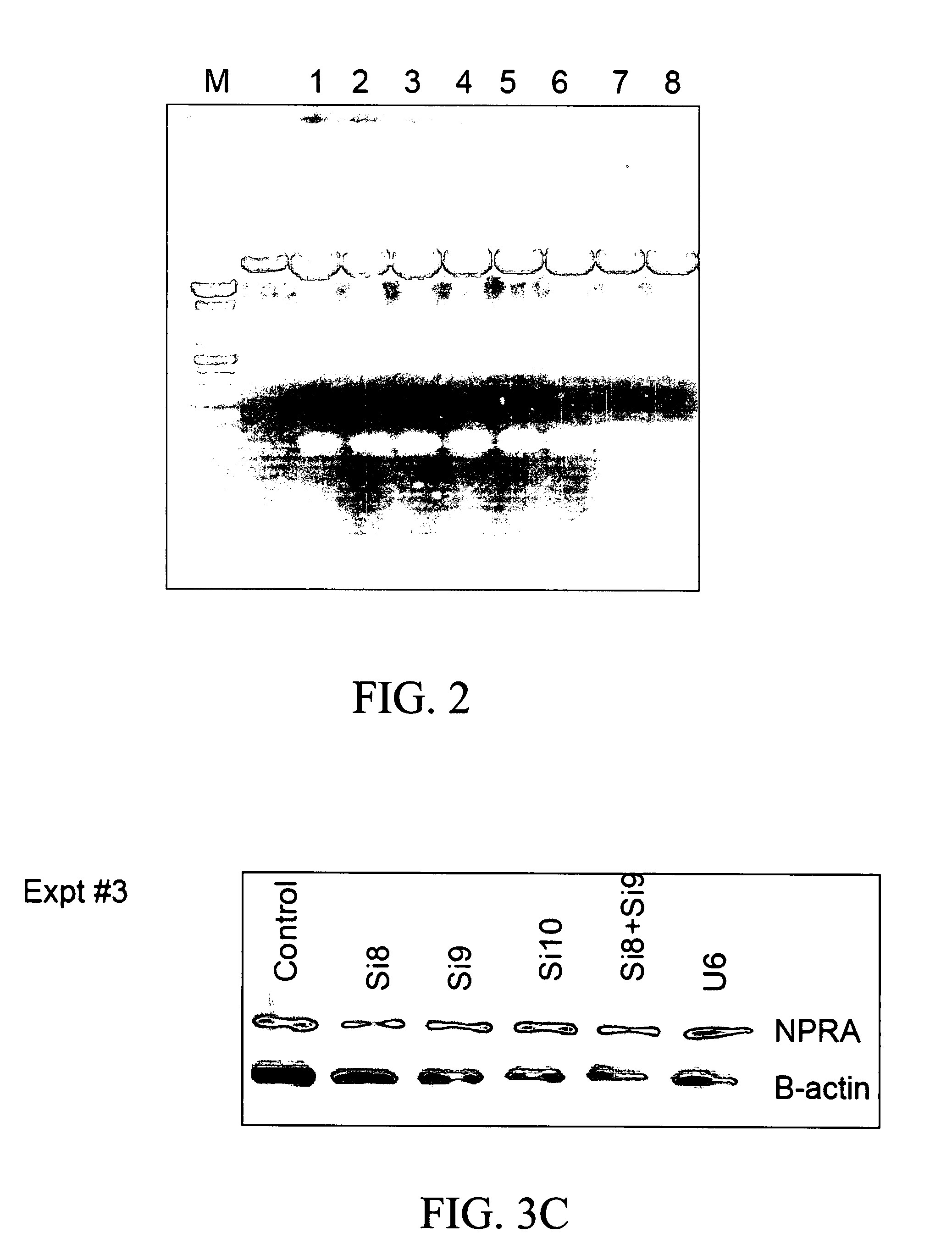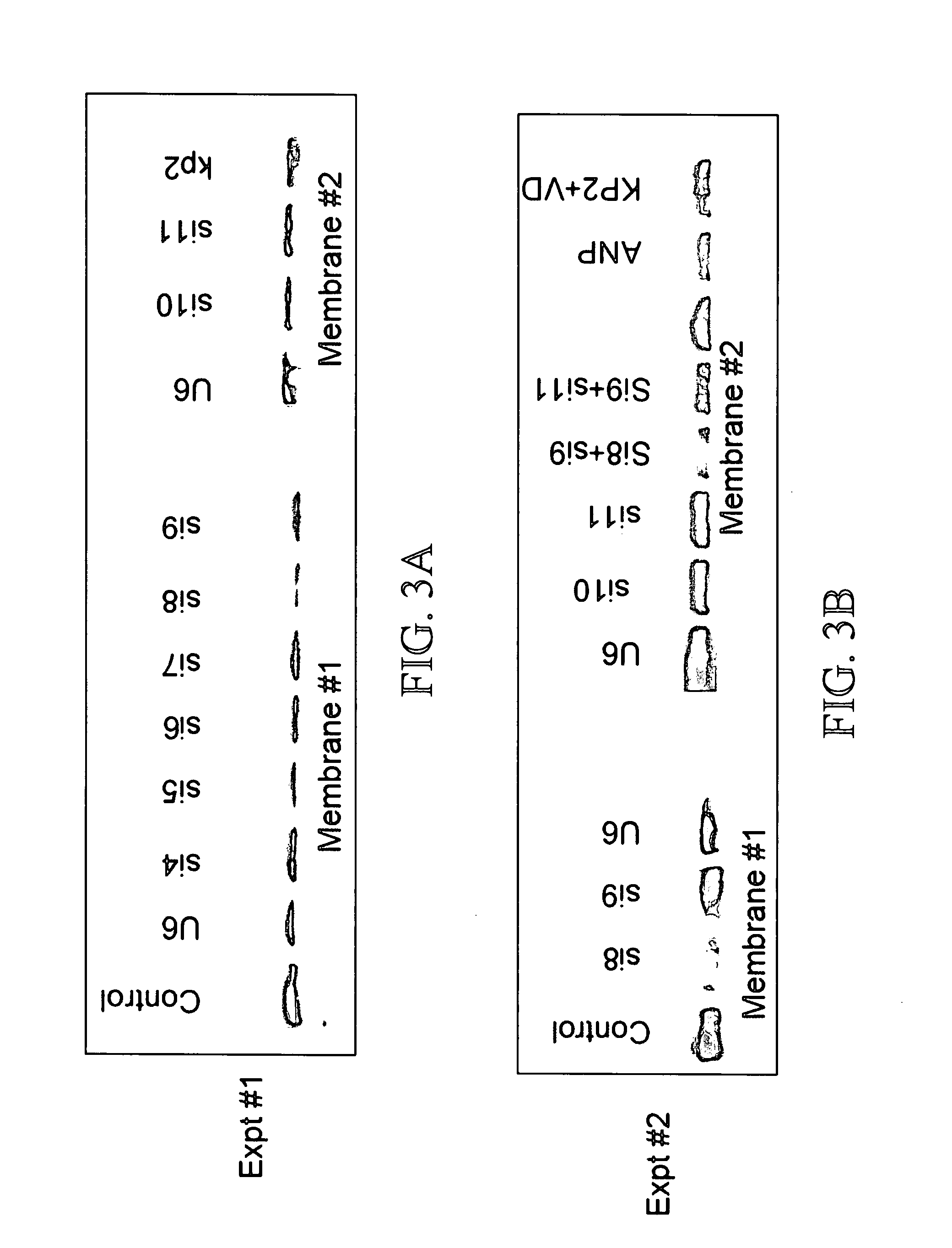Materials and methods for reducing inflammation by inhibition of the atrial natriuretic peptide receptor
a natriuretic peptide and atrial nephritis technology, applied in the direction of peptides, dna/rna fragmentation, drug compositions, etc., can solve the problems of non-reversible airway remodeling, triple-stranded structure instability, and the improvement of inflammation in allergic diseases, so as to inhibit the expression of npra
- Summary
- Abstract
- Description
- Claims
- Application Information
AI Technical Summary
Benefits of technology
Problems solved by technology
Method used
Image
Examples
example 1
ANP Overexpression in the Lung Augments Inflammation and Cytokine Production in Splenocytes
[0140] ANP has been suspected to play a role in decreasing inflammation, as it was shown to play a role in decreasing TNF-α production from macrophages and slightly decreased NFkB activation (Mohapatra et al. JACI, 2004). Also, NPRA deficient mice did not exhibit inflammation. Since excess ANP expression activates the clearance receptor, it was hypothesized that ANP actually increases inflammation. To test this, naïve mice were administered intranasally a plasmid pVAX expressing the ANP peptide. The results show that ANP overexpression actually increases inflammation.
[0141] Materials and Methods
[0142] Animals. Six-week old female BALB / c mice from Jackson laboratory (Bar Harbor, Me.) were maintained in pathogen free conditions in accordance with animal research committee regulations.
[0143] Construction of ANP expression vector. Total RNA was isolated from murine heart using Trizol reagent (...
example 2
Inhibitory Effect of Transfected siRNA Plasmids on NPRA Expression
[0147] To determine whether siRNAs can be produced that will effectively decrease NPRA expression, 11 different siRNA oligos were designed and cloned in a pU6 vector. Cells transfected with each of the construct was examined for NPRA protein expression by western blotting.
[0148] Materials and Methods
[0149] Plasmid constructs. The nucleotide sequence for each siRNA is described previously (SEQ ID #1-11). Each pair of oligos was inserted into pU6 plasmid at appropriate sites respectively, to generate the corresponding siRNA for siNPRA.
[0150] DNA transfection. Cells were transfected with siNPRA or controls (siU6) using LIPOFECTAMINE 2000 reagent (INVITROGEN, Carlsbad, Calif.). pEGFP plasmid (STRATAGENE, La Jolla, Calif.) was used for measurement of transfection efficiency.
[0151] Protein expression analysis by Western blotting. Transfected cells were used to prepare whole cell lysates, which were electrophoresed on 1...
example 3
Demonstration that Oral siNPRA Treatment Decreases Inflammation, Eosinophilia and Th2 Cytokines in BALB / c Mice
[0155] To determine whether decreased expression of NPRA by siNPRA treatment will reduce inflammation in asthma, the effect of intranasal siNPRA9 was tested in ovalbumin-induced mouse model of asthma.
[0156] Materials and Methods. Six to eight week-old BALB / c mice (n=6) were sensitized by i.p. injection of ovalbumin (50 ug in 2 mg of alum / mouse) and challenged intranasally with OVA (50 μg). Mice were given two siNPRA9 treatments by gavage and challenged 24 hours later. After a further 24 hours of challenge, mice were sacrificed and their lungs removed for histology in a subgroup (n=3) of mice. The remainder of the group were lavaged and a cell differential was performed as described, especially to enumerate the eosinophil numbers in the BAL fluid. Thoracic lymph node cells (A) and spleen cells (B) were removed and cells cultured for 48 hours in the presence of OVA (Sigma Gr...
PUM
| Property | Measurement | Unit |
|---|---|---|
| Pharmaceutically acceptable | aaaaa | aaaaa |
Abstract
Description
Claims
Application Information
 Login to View More
Login to View More - R&D
- Intellectual Property
- Life Sciences
- Materials
- Tech Scout
- Unparalleled Data Quality
- Higher Quality Content
- 60% Fewer Hallucinations
Browse by: Latest US Patents, China's latest patents, Technical Efficacy Thesaurus, Application Domain, Technology Topic, Popular Technical Reports.
© 2025 PatSnap. All rights reserved.Legal|Privacy policy|Modern Slavery Act Transparency Statement|Sitemap|About US| Contact US: help@patsnap.com



